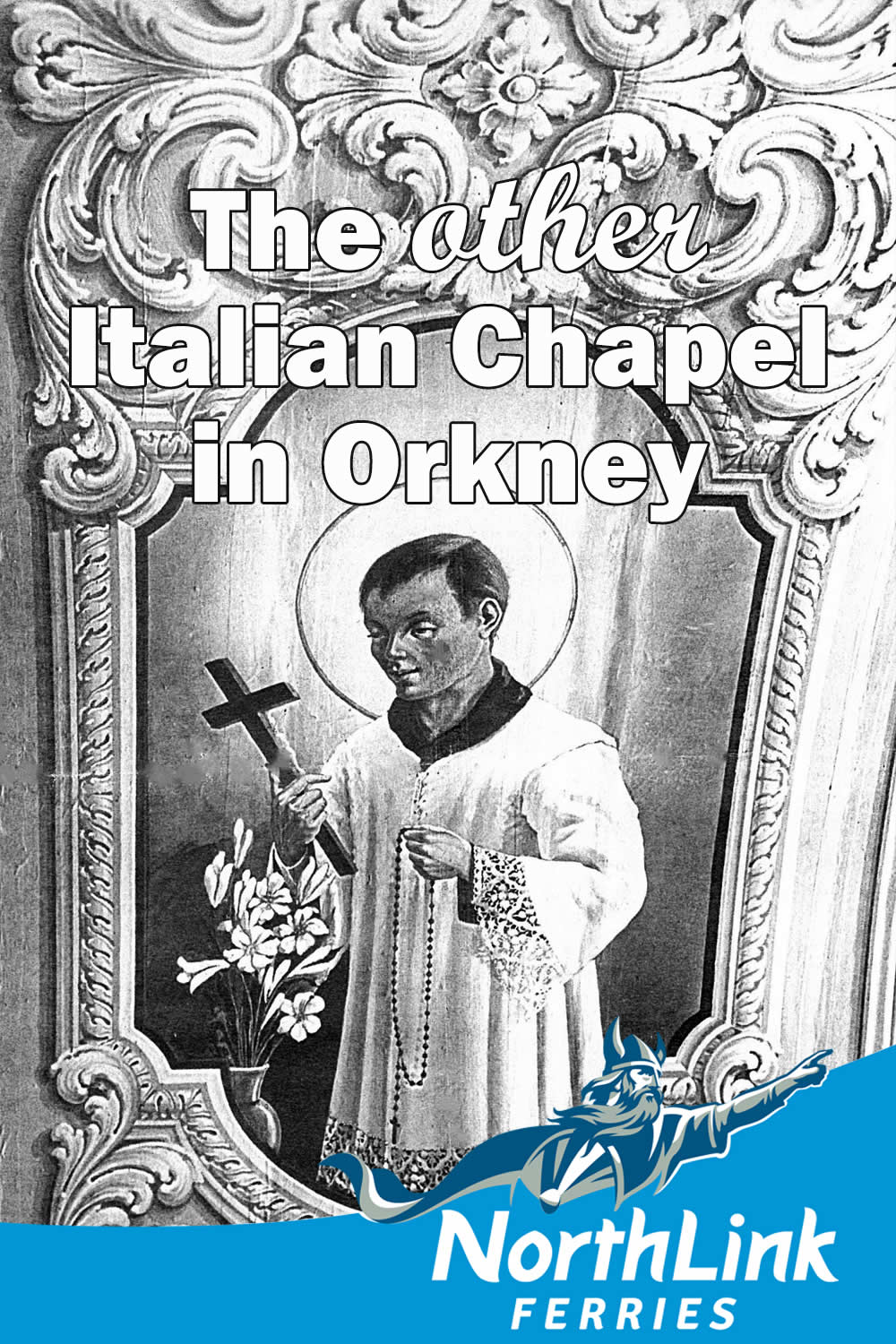The other Italian Chapel in Orkney
One of the most moving places to visit in Orkney is the Italian Chapel on Lamb Holm. This exquisite building was built out of scrap material by the Italian Prisoners of War who had helped to construct the Churchill Barriers during the Second World War.
Despite being defeated, imprisoned, and viewed as the enemy, the Italian POWs were determined to show to the world, through the creation of beautiful buildings, art, and music, that Italy, her culture, and people, were to be celebrated.
However not many people know that there was a second Italian Chapel, on Burray. Sadly, it did not survive after the war ended.
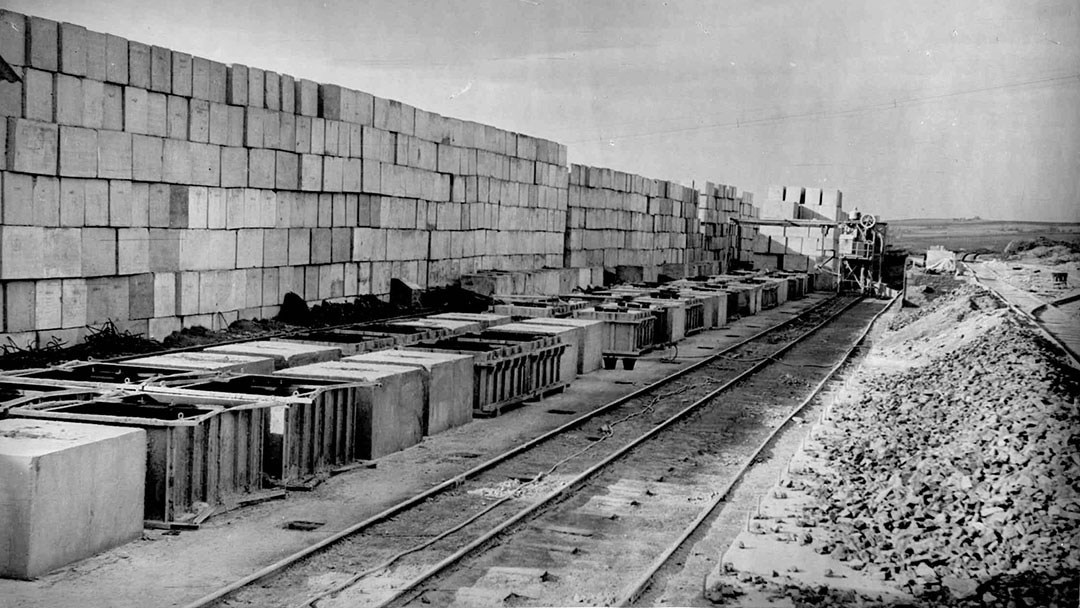
At the start of the war, a U-47 U-boat sneaked into Scapa Flow and drove torpedoes into the battleship HMS Royal Oak. With the loss of 835 lives, it was decided that the four eastern gates to these waters should be sealed. Five and ten tonne concrete blocks, 66,662 in all, would be laid between islands, blocking the entrance to Scapa Flow and providing a link from the south isles to the Orkney Mainland at the same time.
The work was begun by Balfour Beatty and the Admiral Civil Engineering Works in 1940 but as their men began to leave for war, an additional workforce was needed. A thousand skilled Italian POWs who had been captured in North Africa were taken to Orkney.
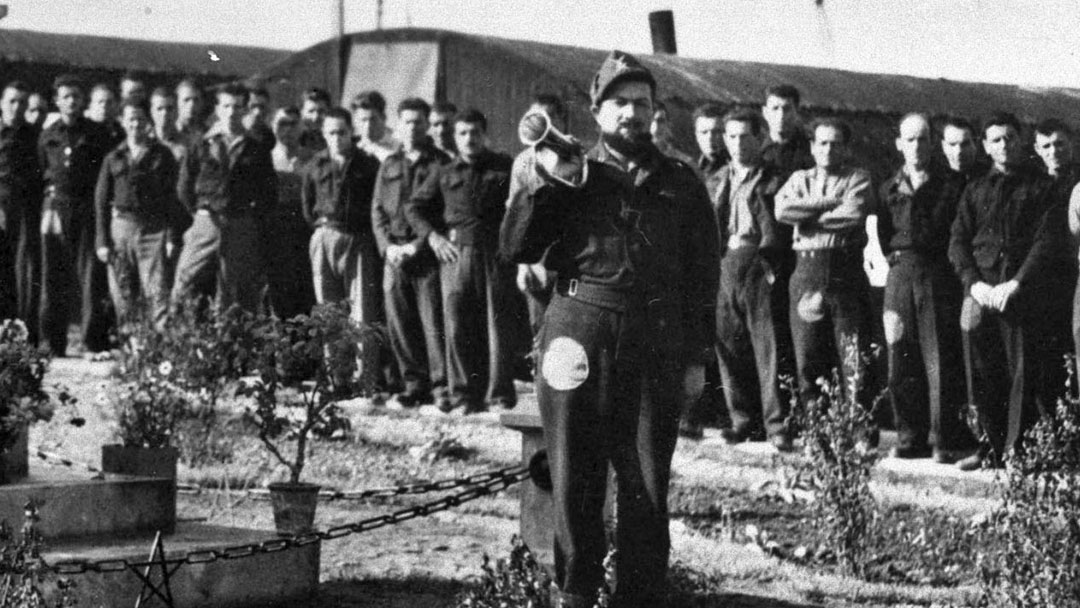
In January and February 1942 around 500 Italians arrived on the island of Lamb Holm, at Camp 60. This is the location of the Italian Chapel that still stands, and these men would work on No. 1 and No. 2 barriers.
Another 530 or thereabouts would stay in Camp 34 at Warebanks on the north end of Burray, to work on No. 3 and No. 4 barriers.
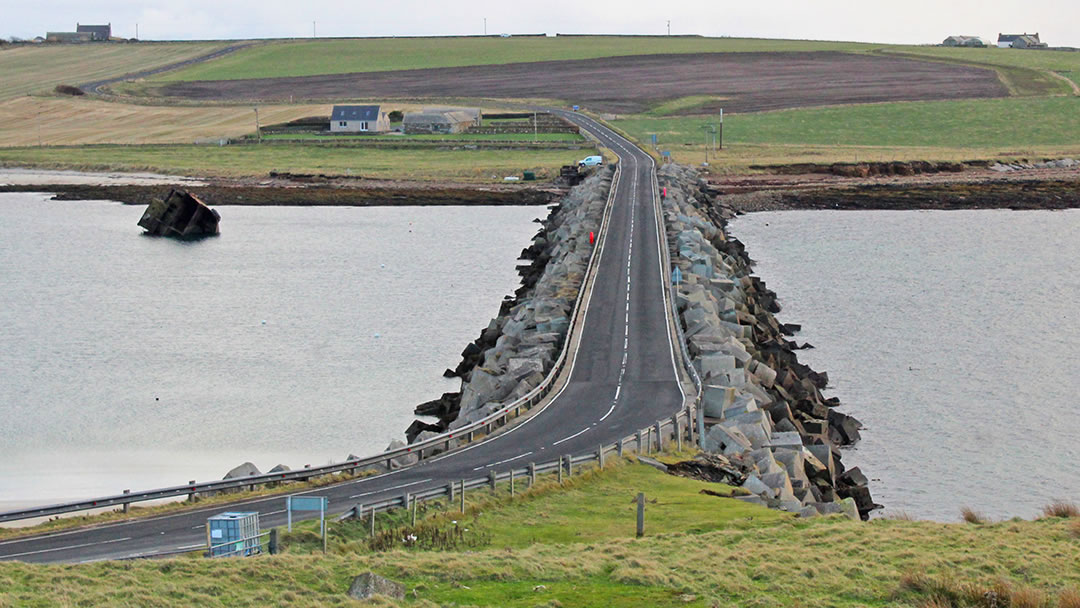
The place where Camp 34 stood can be easily found today. When crossing the No. 3 barrier from Glimps Holm to Burray (passing the keeled over and rusting hull of the Reginald) the road arcs uphill to the left and at the top there is a viewpoint. Camp 34 once sat to the east of this arc, with rows of barrel shaped Nissen huts surrounded by a sturdy fence.
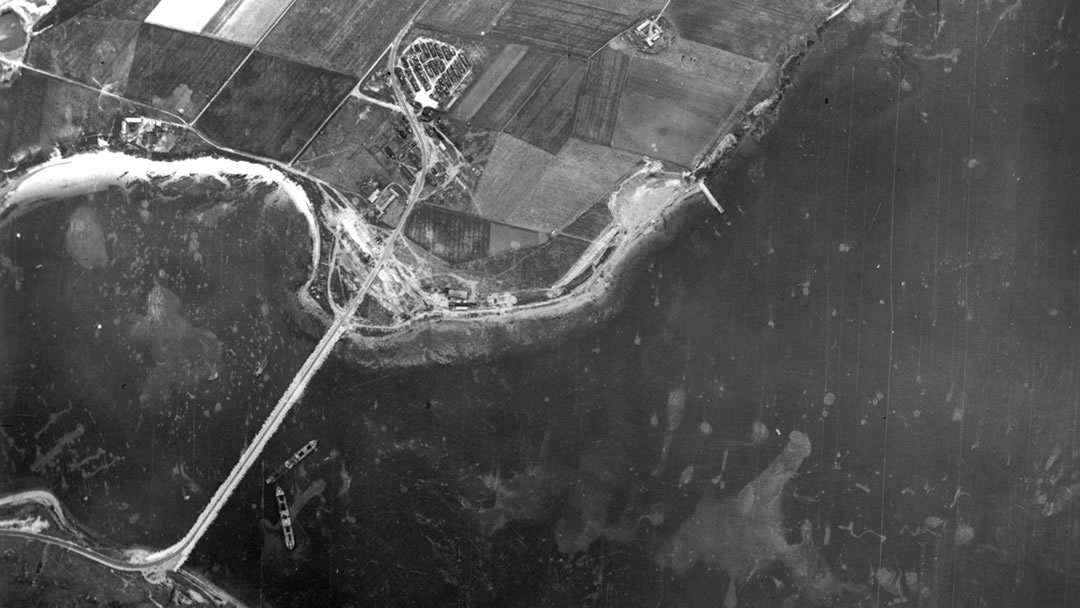
Life for the Italians in the overcrowded camp was a struggle. Building the Churchill Barriers was very hard and dangerous work, carried out in the biting cold wind. Political unrest in Italy made the men fearful for their loved ones back home. Communication between the POW camps was initially forbidden. Like the POWs at Camp 60 on Lamb Holm, the Italians at Camp 34 were under constant and strict surveillance from armed guards, a detachment from the Argyll and Sutherland Highlanders.
As time wore on, the Italian POWs made changes to make life tolerable. In their spare time they sketched, played music, performed in dramatic productions, and took part in football matches.
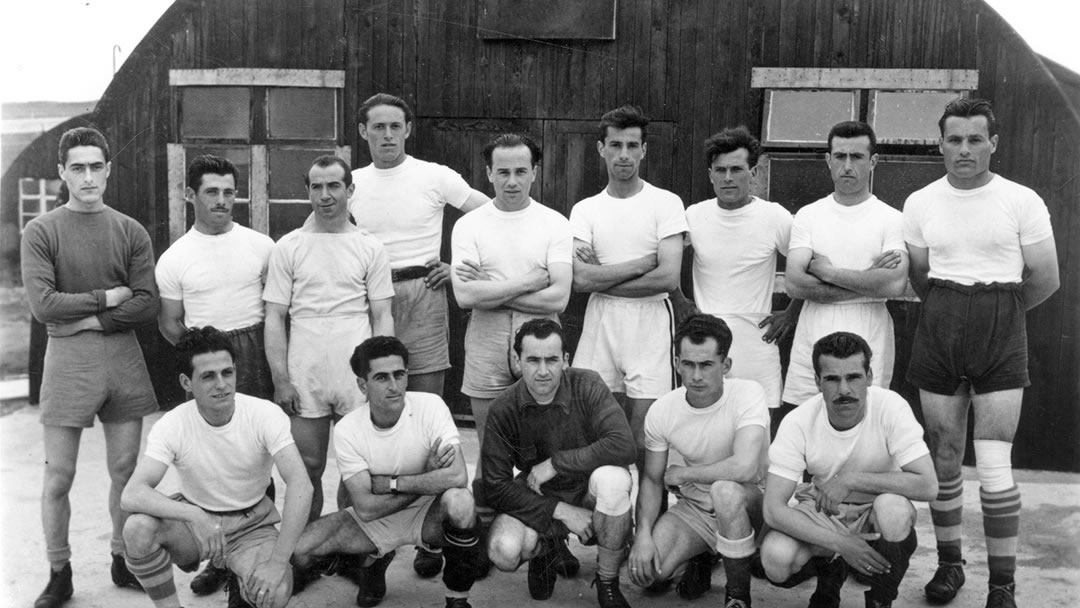
Among the Italians in Camp 34 on Burray there was a military chaplain, Father Luigi Borsarelli. As well as providing spiritual guidance, he also taught many of the illiterate men learn how to read.
Other POW camps had a place of worship. Having faith in difficult times helped many prisoners, so it was not long before work began on a chapel for Camp 34.
The Italian Chapel on Lamb Holm was famously created by Domenico Chiocchetti and the skilled artisans under his direction. On Burray, in Camp 34, it was artist Sergeant Giovanni Pennisi who gathered a team of craftsmen and created a chapel, with Father Borsarelli’s help.
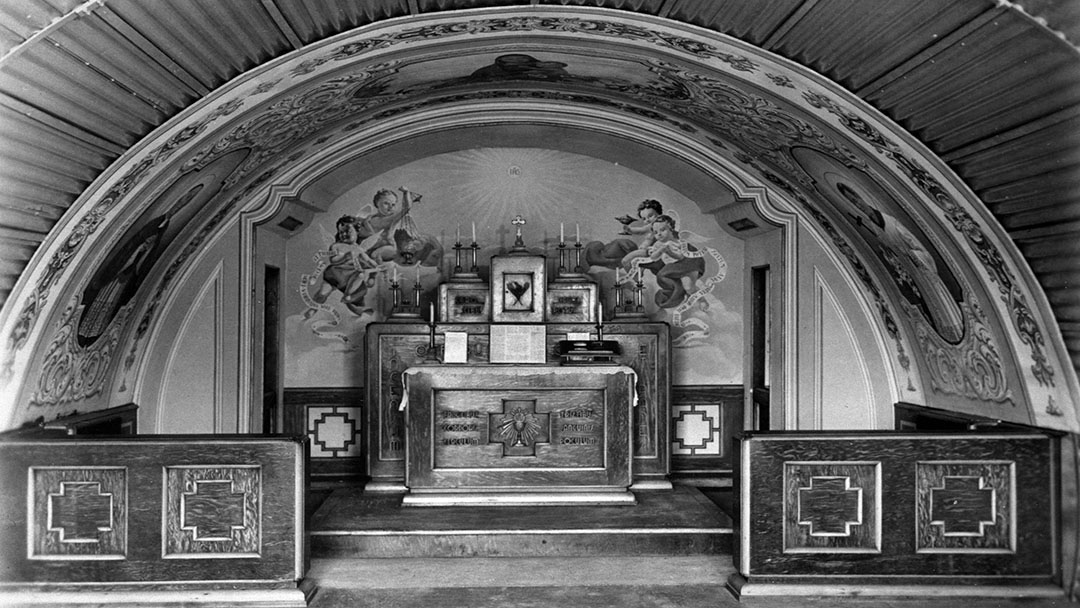
One end of a Nissen hut was beautifully decorated and the photo above shows how the chapel section was clearly defined from the rest of the corrugated hut by an ornate alter and screen. The plastered roof and walls showed show images of angels, saints, and the Madonna and child. This writer thinks the paintwork is equal to that of the Lamb Holm chapel.
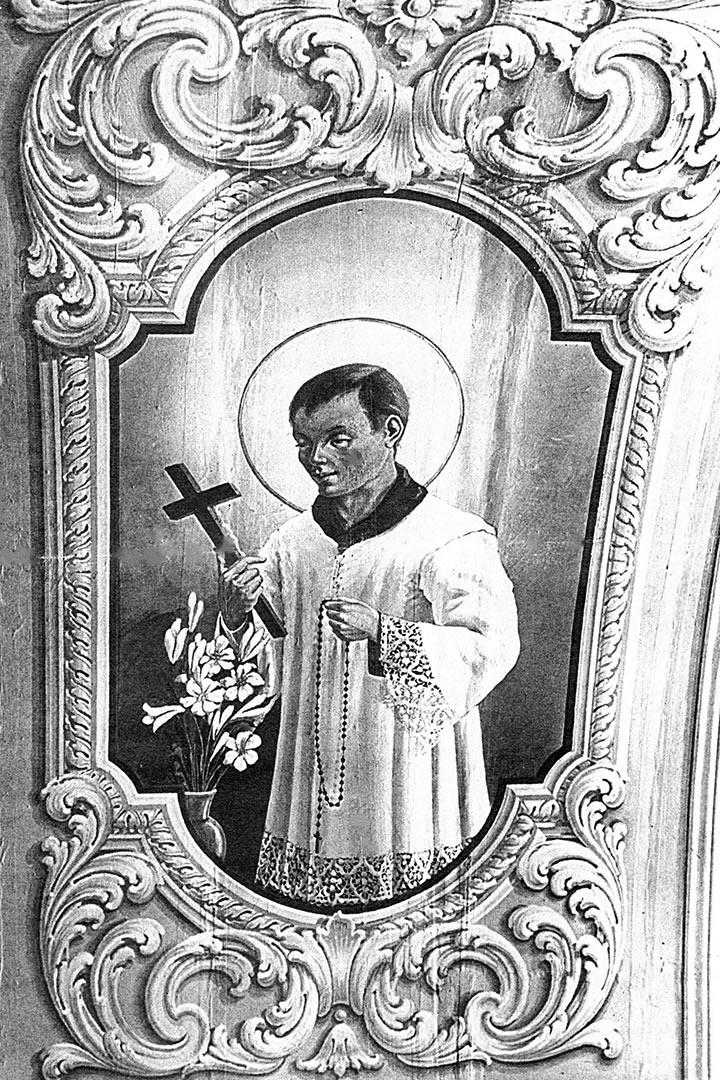
The Camp 34 chapel was completed in summer 1942, and afterwards, regular services were conducted there by Father Borsarelli.
Giovanni Pennisi was a talented artist who painted the sets for many of the plays performed by the Italians for entertainment, such as the costume drama Don Pedro the Justifier, pictured below. From July 1944, Camp 34 had its own monthly newsletter, Sole d’Italia (Italian Sun), and Giovanni Pennisi’s illustrations also featured on the cover.
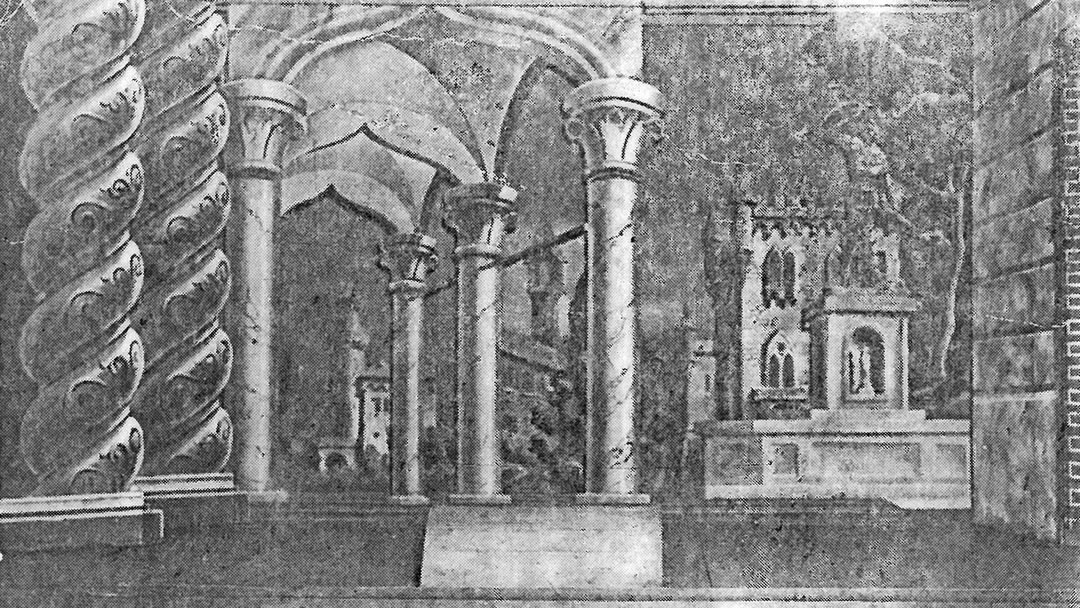
When work began on the Lamb Holm Italian Chapel, around Christmas 1943, Giovanni Pennisi would travel every day from Camp 34 to Camp 60 to assist his friend, Domenico Chiocchetti. In fact, it was Giovanni Pennisi who designed the distinctive white façade on the front exterior of the Italian Chapel on Lamb Holm.
This was the biggest difference between the Lamb Holm chapel and the Camp 34 chapel. The latter was not decorated outside and looked like any other Nissen hut. This fact proved to be its undoing.
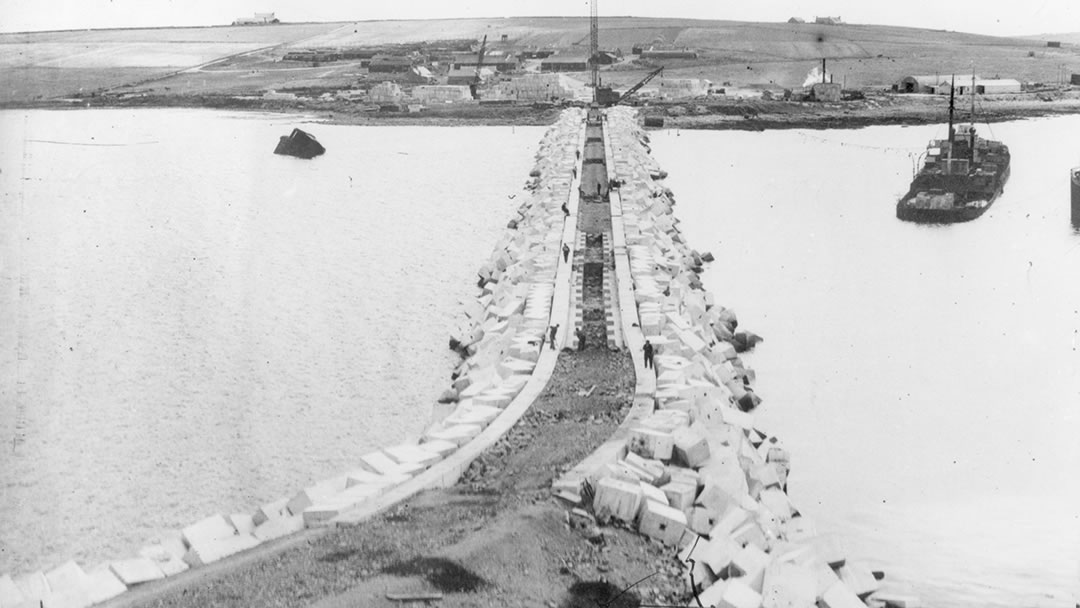
Major Yates oversaw Camp 34, and the internal commandant was Marshal Bertone. The lives of the Italians are well documented – in particular, Gino Caprara’s Camp 34 recollections on Orkneyology make for a spellbinding read.
After the Italian capitulation on 3rd September 1943, most of the Italians stayed in Orkney and life became easier. By this point, relations between the prisoners and their guards had already improved, and many Italians had obtained positions of responsibility.
Then on 30th September 1943 an Italian Priest, Gioacchino Giacobazzi (Padre Giacomo) arrived on Lamb Holm. Camp 60 had been without a priest, and Padre Giacomo encouraged the building of the Italian Chapel that survives today.
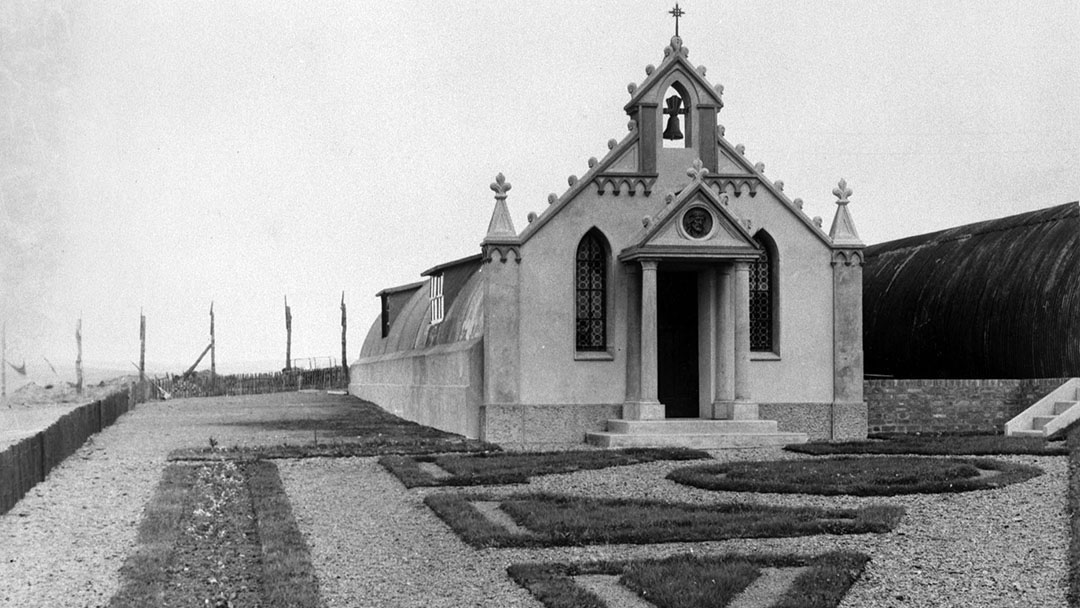
The Italians in Lamb Holm left in September 1944, and those in Camp 34 left in Spring 1945. They travelled to camps in England before eventually being permitted to return home.
Once the war was over, the land the POW camps had occupied was to be returned to its pre-war state. Salvage contractors Halcro and Norquoy were sent in to dismantle the POW camps, and the Nissen huts were quickly demolished (extra pay was to be given for getting the job done swiftly).
One lone building remained – the Italian Chapel on Lamb Holm. One of the men charged with demolishing it was a Church of Scotland elder, and aware of the care that had gone into building the chapel, he questioned the order. Thankfully, the owner of the island, Patrick Sutherland Graeme of Graemeshall, was also keen to preserve it.
Only the exterior beauty of the Lamb Holm chapel had prevented it from being destroyed.
The Camp 34 chapel was not so fortunate. With the exterior undecorated, the chapel was demolished along with the other Nissen huts of Camp 34. All that remains now is a green field and photos.
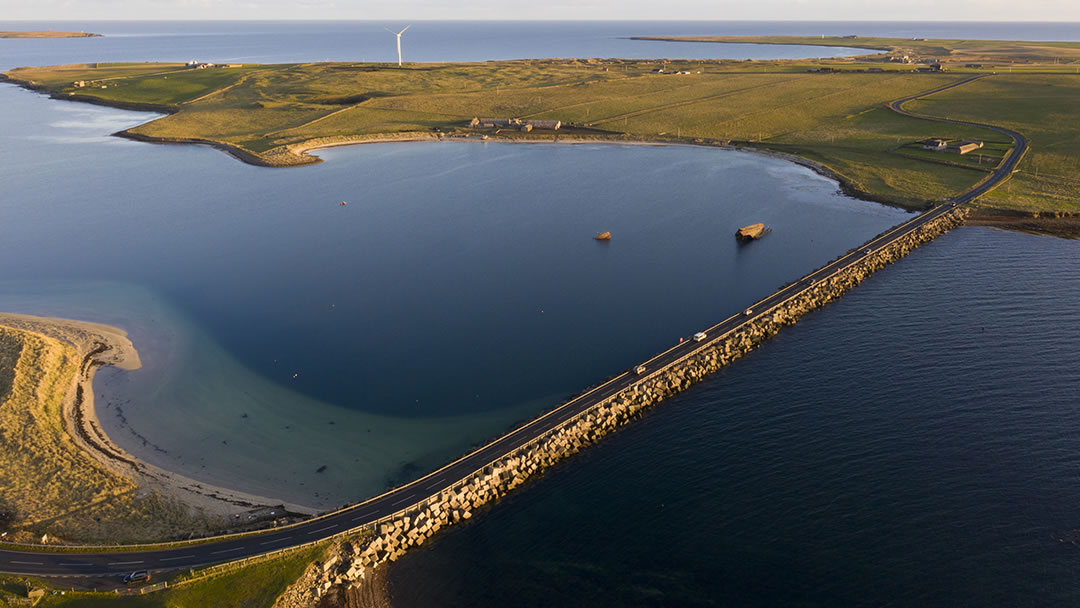
The determination to build a chapel undoubtedly showed the strong faith of the Italian prisoners.
However, I suspect something else fuelled the building of these lovely places – a sense of pride. Despite being defeated, imprisoned, and viewed as the enemy, the Italian POWs were determined to show to the world, through the creation of beautiful buildings, art, and music, that Italy, her culture, and people, were to be celebrated.
80 years later, the photographs that survive of the chapel in Camp 34, and the Italian Chapel on Lamb Holm, show that the Italian POWs succeeded.
With grateful thanks to the Orkney Library and Archive for the photos used in this article, which come from the James Sinclair collection. For further reading please seek out Churchill’s Prisoners by James MacDonald, Orkney’s Italian Chapel by Philip Paris, Bolsters, Blocks, Barriers by Alastair and Anne Cormack, and Gas Masks and Ration Books: Wartime in South Ronaldsay and Burray by G.L. Esson.
 By Magnus Dixon
By Magnus DixonOrkney and Shetland enthusiast, family man, loves walks, likes animals, terrible at sports, dire taste in music, adores audiobooks and films, eats a little too much for his own good.
Pin it!